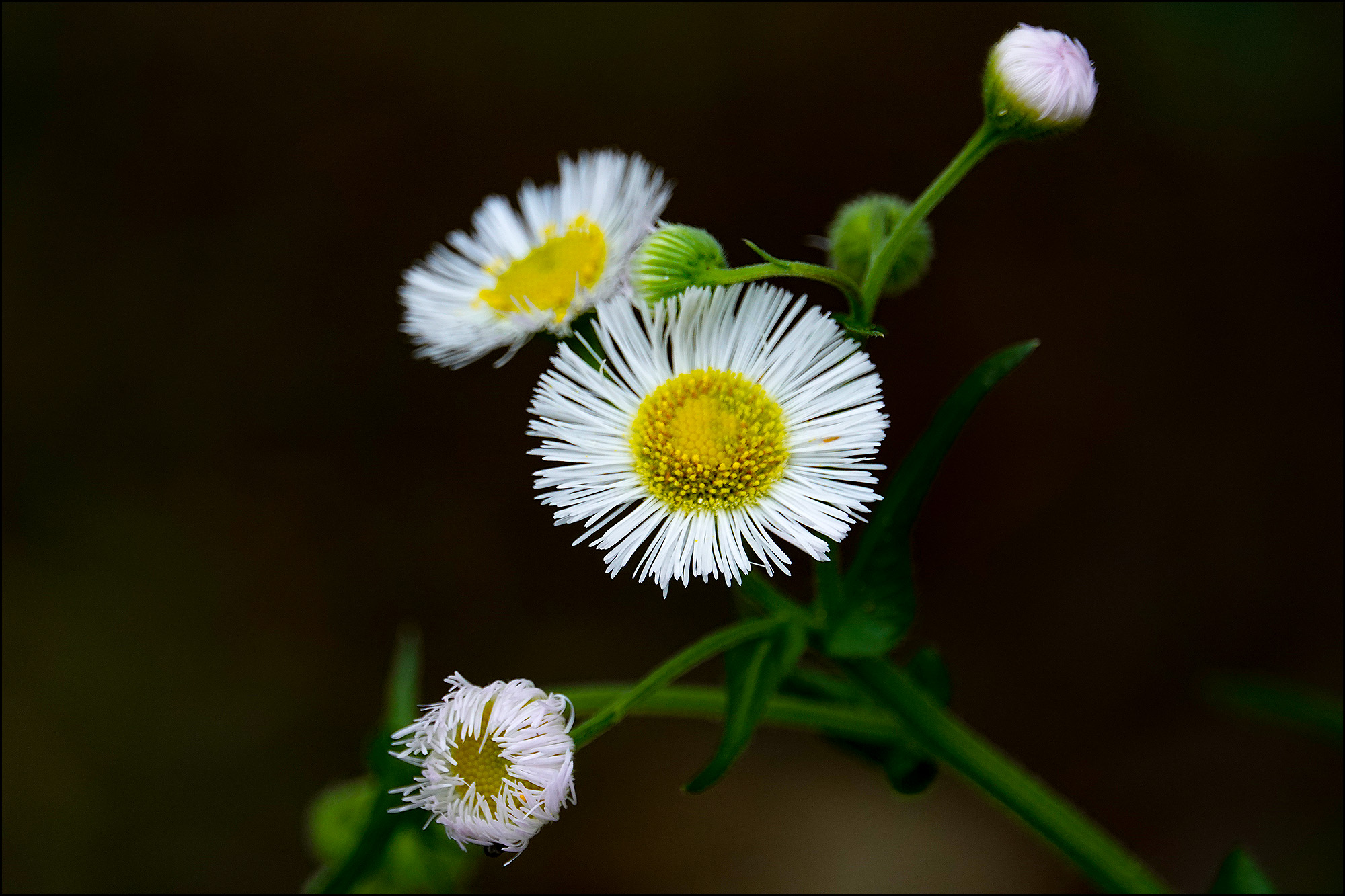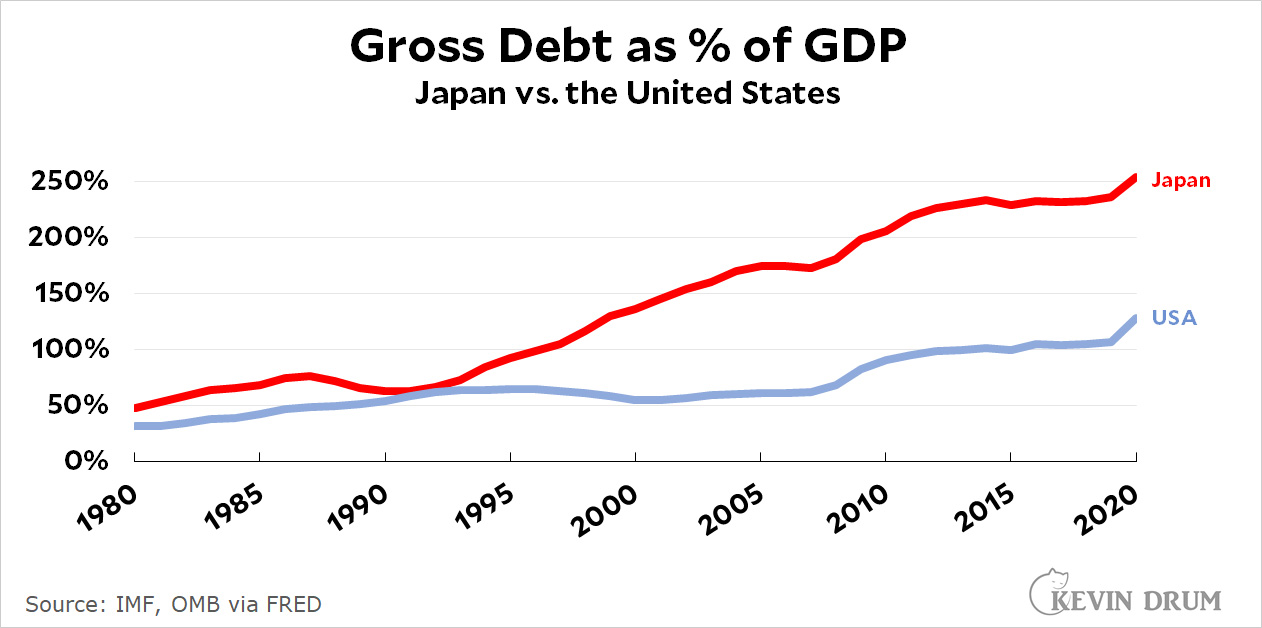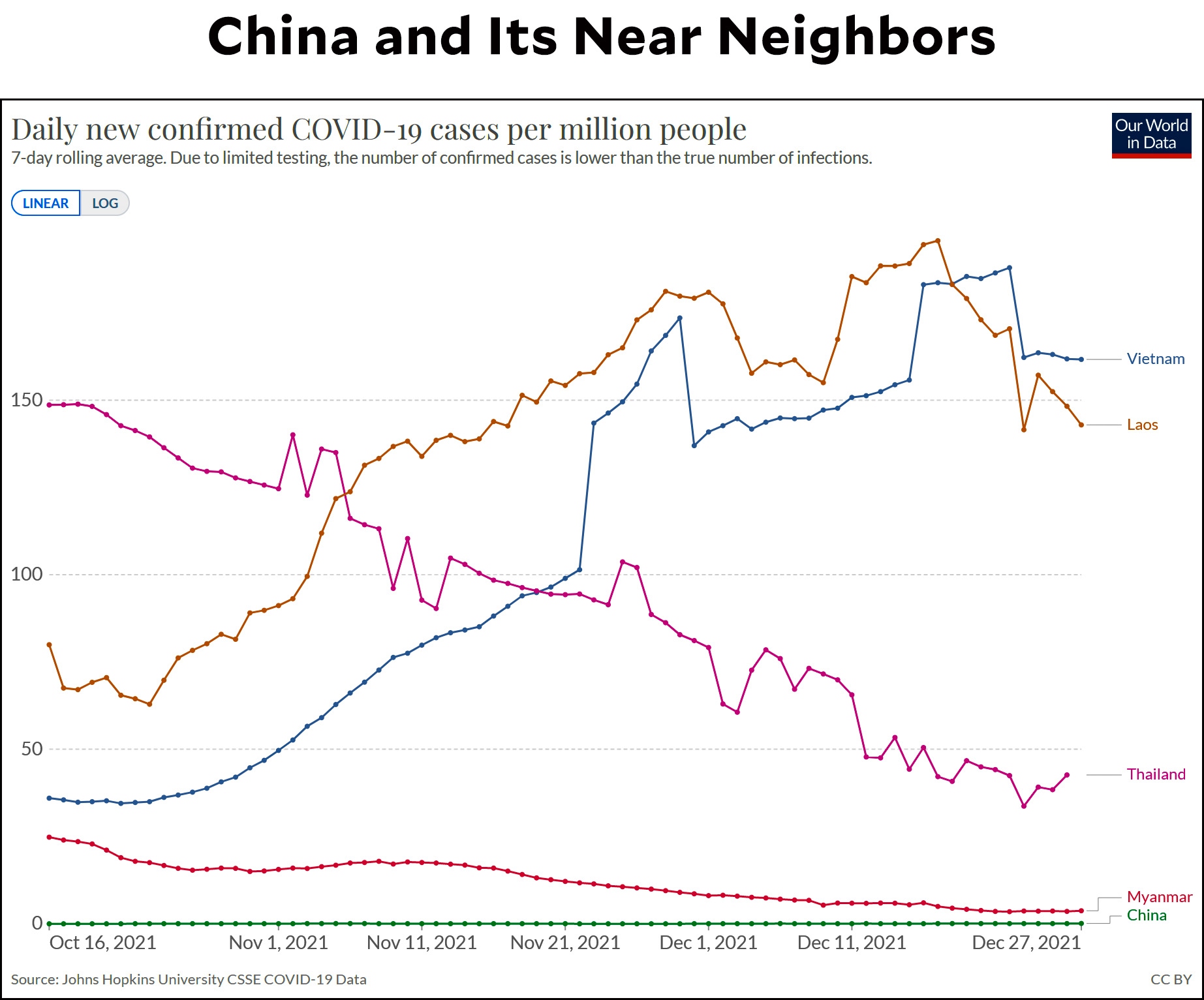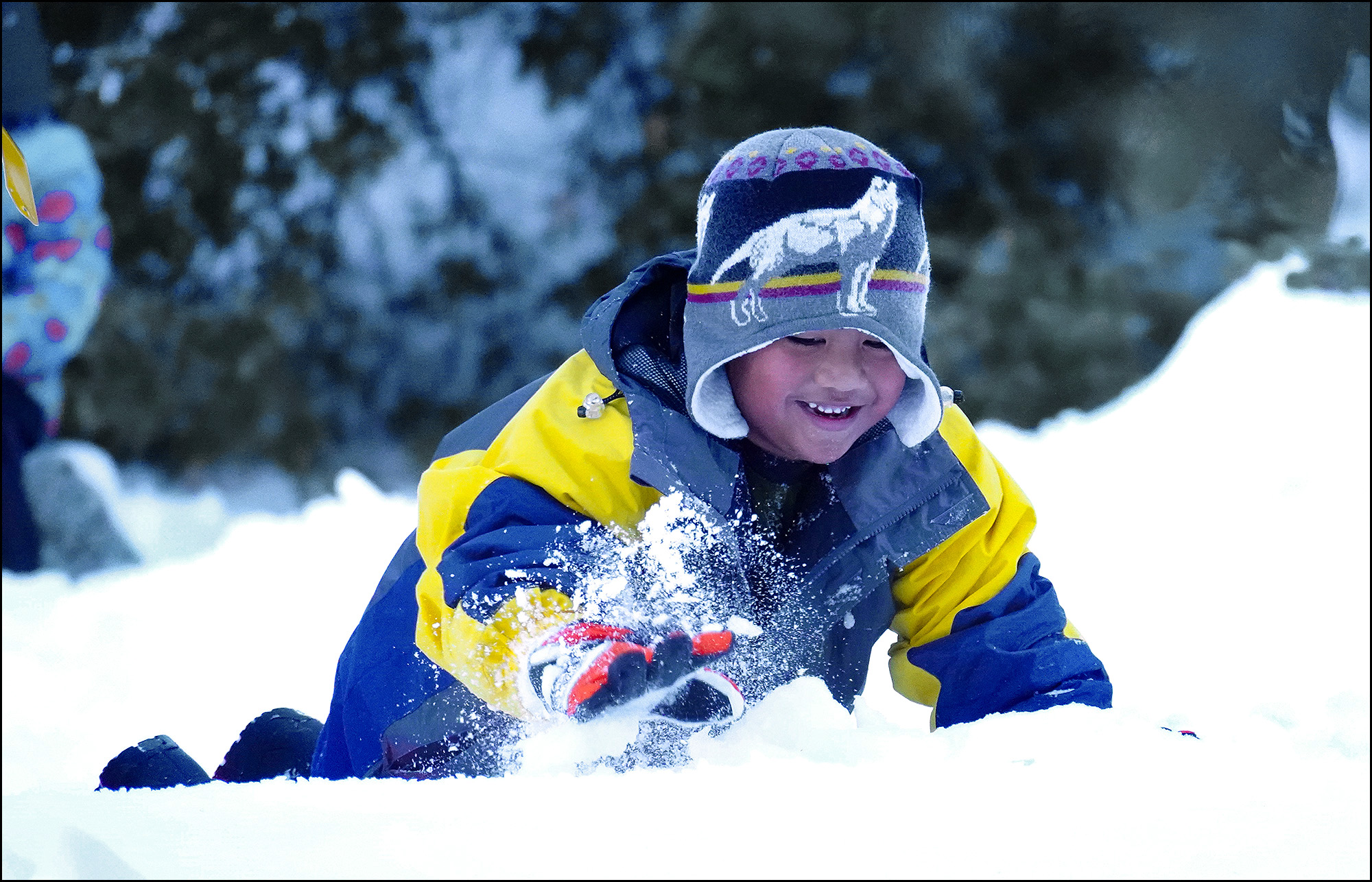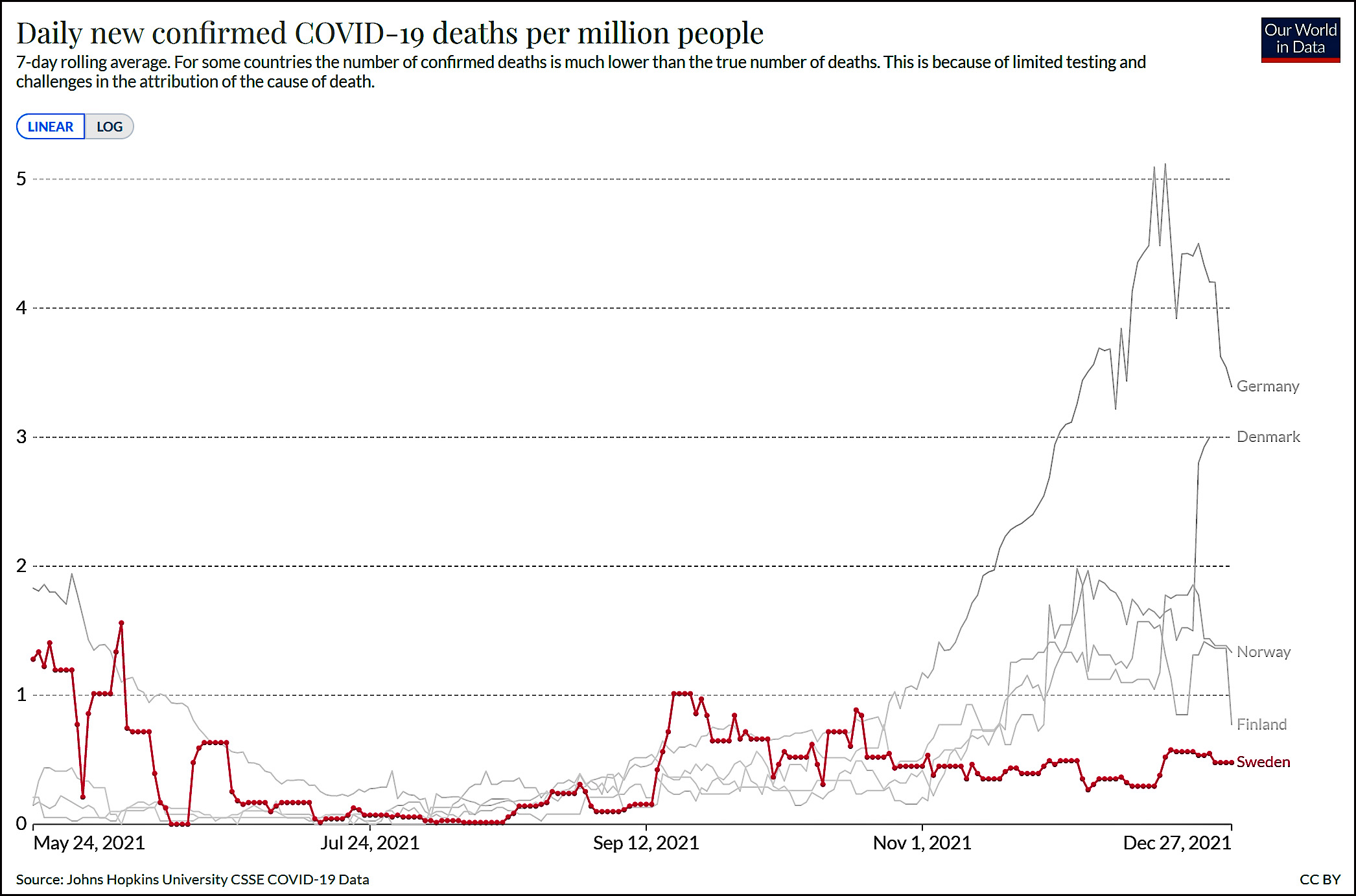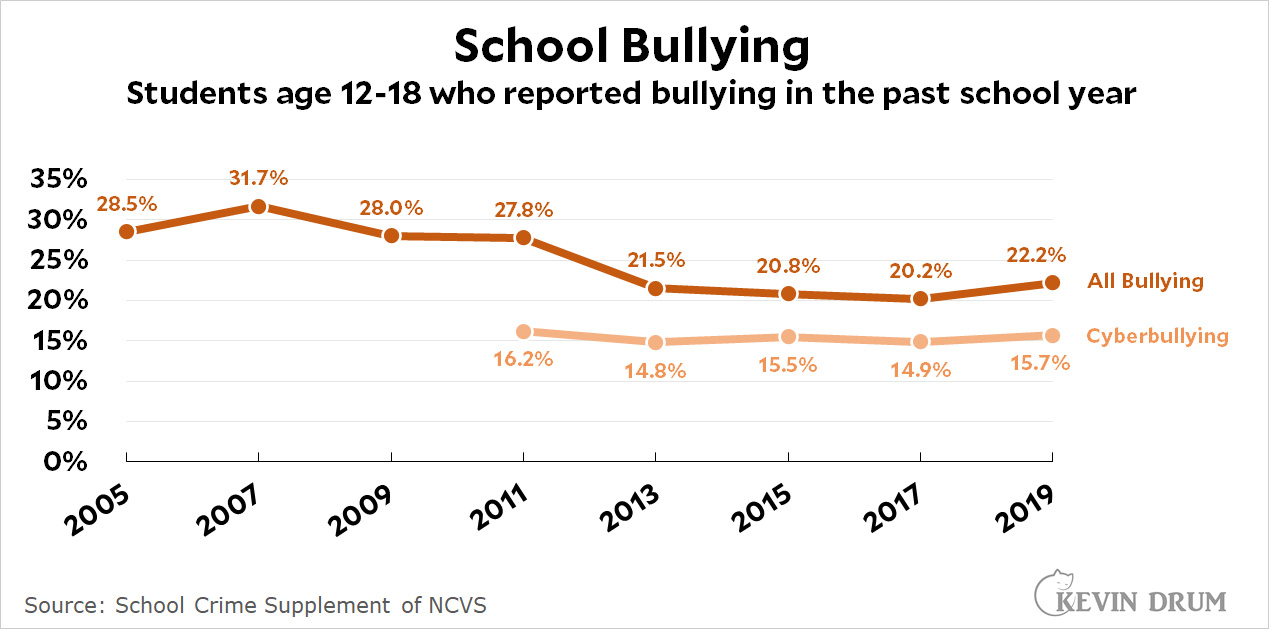How useful are face masks in halting the transmission of COVID-19? There are two things to look at.
First, how well do they protect the wearer? Here are the results of a literature review done last year:
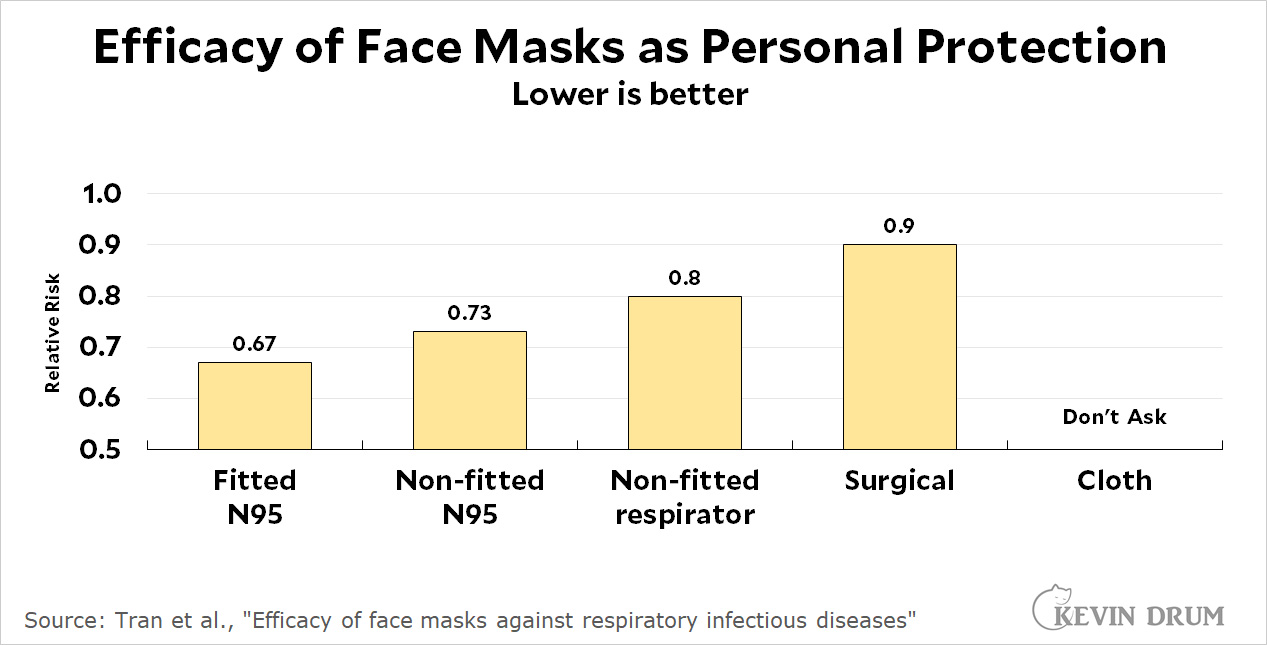 These are not super great results, and the authors warn that most of the studies were underpowered and had large error bars. N95 masks did a better job than the others, but most likely masks in general do little to protect wearers.
These are not super great results, and the authors warn that most of the studies were underpowered and had large error bars. N95 masks did a better job than the others, but most likely masks in general do little to protect wearers.
More important is how well masks prevent transmission of COVID within a community. I couldn't find any recent literature reviews that address this, but an informal review in JAMA earlier this year listed eleven studies of mask wearing on community spread of COVID:
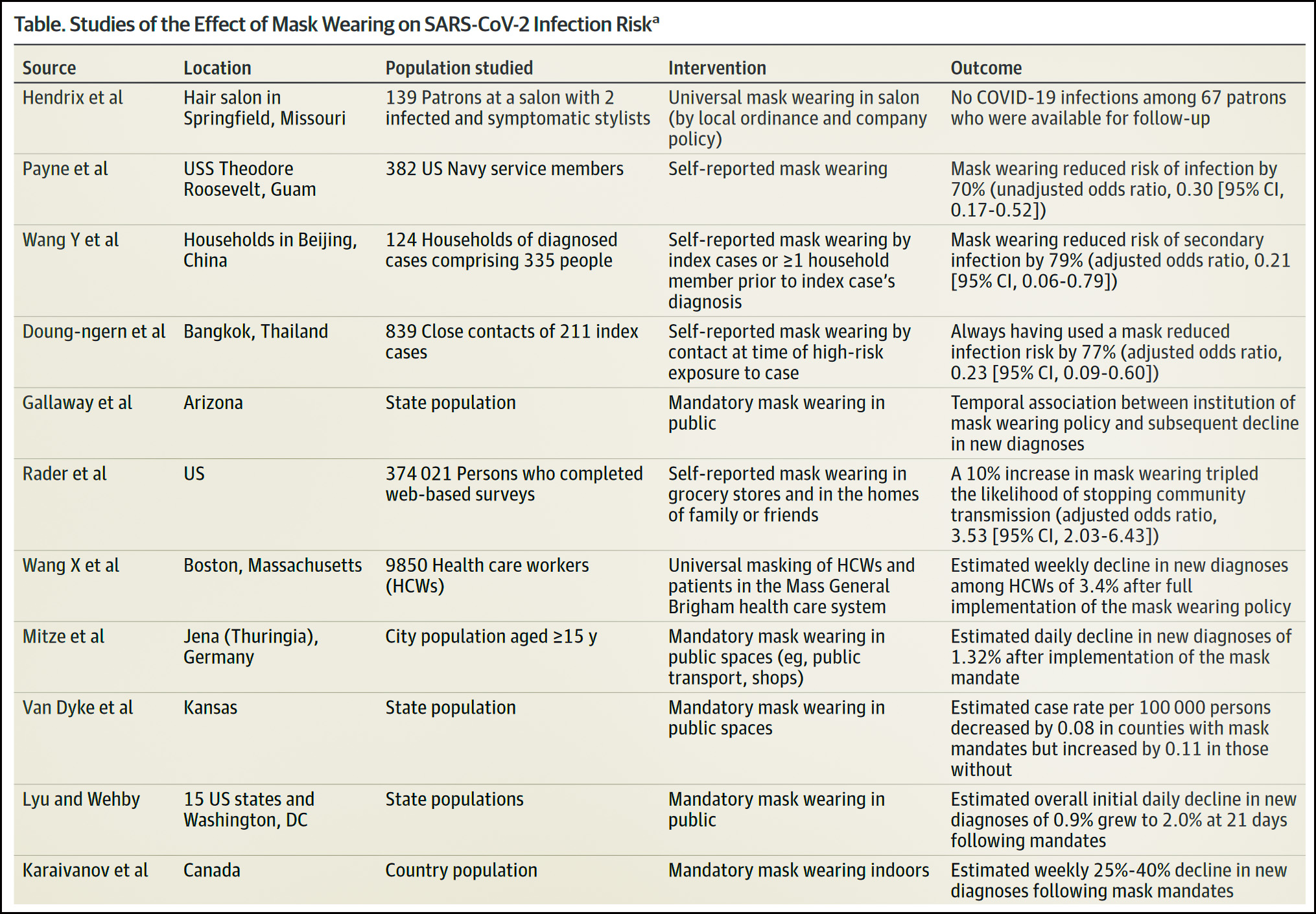 This article presents no overall estimate of how well mask-wearing works to slow the spread of COVID, nor does it estimate how good each of these individual studies is. That said, an eyeball review of the results suggests that masks are effective at slowing the transmission of COVID if they're widely used.
This article presents no overall estimate of how well mask-wearing works to slow the spread of COVID, nor does it estimate how good each of these individual studies is. That said, an eyeball review of the results suggests that masks are effective at slowing the transmission of COVID if they're widely used.
The CDC keeps track of mask studies on its website here. Their list is more current than the JAMA list, and virtually all studies continue to show that masks are effective at slowing the spread of COVID:
At least ten studies have confirmed the benefit of universal masking in community level analyses: in a unified hospital system, a German city, two U.S. states, a panel of 15 U.S. states and Washington, D.C., as well as both Canada and the U.S. nationally....Two of these studies and an additional analysis of data from 200 countries that included the U.S. also demonstrated reductions in mortality. Another 10-site study showed reductions in hospitalization growth rates following mask mandate implementation. A separate series of cross-sectional surveys in the U.S. suggested that a 10% increase in self-reported mask wearing tripled the likelihood of stopping community transmission.
But what type of mask works best? Good studies on this are hard to find, but in general N95 masks are best, surgical masks are good, and cloth masks are lousy. You should especially use N95 masks if you're going to be in close proximity to others for long periods, for example on a long airplane trip or an all-day meeting in a stuffy room.
Based on all this evidence, my view is that masking up indoors isn't a game changer like vaccines, but it's a pretty good countermeasure that easily wins a cost-benefit analysis. So why not do it?
